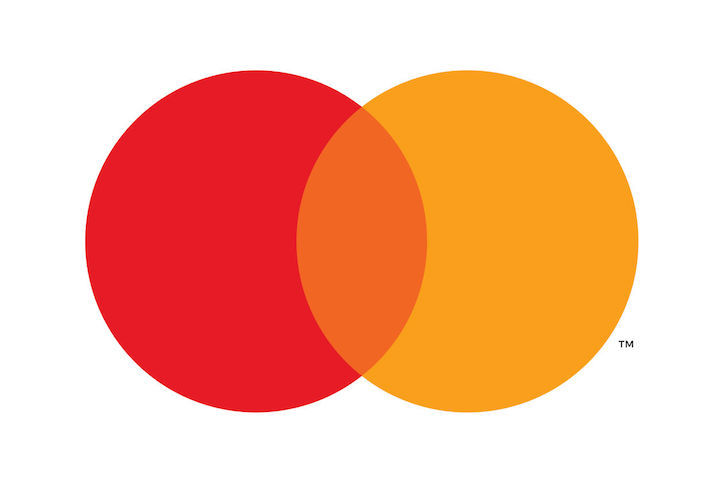
26.02.19
Brand simplicity – a trend or simple evolution?
Have you noticed some big name brands have tweaked, condensed and toned down their identities recently?
Earlier this year, Mastercard dropped its name from its logo, and a number of industry commentators picked up their pens to discuss the meaning of the move.
The financial brand cited the removal of the wordmark as a move towards greater digital simplicity.

Mastercard new logo
While many have talked this up as a trend towards more simplified, minimal design approaches, this is really nothing new. This ‘trend’ was heralded following American Express’ updated and condensed visual approach last year, as well as almost every time Apple unveils its latest logo evolution.
Even before that, the same comments were made after refreshed identities from the likes of eBay, Google, Starbucks, Netflix and Airbnb….the list goes on and on.
In part, the reality is that the development of clean, simple logos are not a trend but a natural evolution.
As people become ever more familiar with a brand they need less visual information to decode a brand. The logos and their surrounding systems become less like a complex map and more like familiar landmarks.
But there is also a good case to be made for saying things succinctly, even when using symbols rather than words. The simpler something is, as long as it remains true to its core form, the quicker it will be recognised.
The less unnecessary flourish and visual noise a logo has, the less there is to date and go stale. In this way, ‘simple’ quite often goes hand in hand with ‘timeless’ which means, in many cases, it is just good practice.
A key case in point is the evolution of Shell, whose ‘simplification trend’ started in 1909 and whose nameless logo preceded Mastercard’s by some 25 years. There’s also the ubiquitous Apple, who simplified their identity and removed their wordmark back in 1977.
Clearly, the removal of wordmarks from logos is much more a basic tenant, or at the very least a technique, used in visual communication; particularly in the era of ‘social icons’. Mastercard’s rationale is around digital simplicity and removing the name does make the logo more easily replicable across different platforms.
Key to this process is that the Mastercard brand has become so strong and instantly recognisable by its colourways and circles alone that the identity is still as clearly expressed without needing the brand name attached.
Ultimately whether creating a logo from scratch or revisiting an established identity, any brand needs to make the decision about its brand and relevance. The fundamental thinking behind this should be about taking a meaningful, relevant concept and then executing it in surprising, remarkable way. It should really be a decision made independently of any current fashions or branding industry trends.
Crucially, not every trend or stylistic approach is relevant or even useful for every client. This, in some ways, is the weakness of agencies that have a ‘house style’ – in one way their work becomes recognisable but it becomes more about the agency than the client.
Although this ‘simplification trend’ has been around as long as the word ‘minimal’ and the phrase ‘less is more’, it is worth noting that sometimes, for some clients, more is more.
It’s about insight, meaning and relevance – and interpretation in the eyes of the beholder.
A good example from our experience is the varied responses that came back from audiences around the streamlining of the Trinity House logo. The project involved a detailed crest which needed to be updated for modern audiences and simplified to make it as usable on a letterhead, as it is on a high-vis jacket. Their existing logo was incredibly complex and was difficult to reproduce clearly at small sizes and on screen. Alongside this, the complexity meant that it was very expensive to embroider on uniforms.
Our design solved all of these challenges, making life easier for Trinity House, strengthening recognition across all mediums and in some cases saving them money. This is the problem in viewing design styles as ’trends’ when they are, instead, techniques and solutions to very specific problems.
Their clients loved it, it was well received internally and fundamentally, it also had to be greenlit by the Palace. But on Facebook someone commented “too trendy by half” and on Brand New some inferred it was too “hipster”. Both comments are essentially a response to the simplification of Trinity’s extremely complex crest. They make it clear that some will read ’simplification’ as modern and fresh, or as we’ve said, just a trend. But these responses are often made without context as to WHY this was done.
Design is not art or fashion, it’s not there to be subjective or on trend.
Design is there to solve a problem, the form is dictated by the function – once the form fits the function it can be made as elegant as possible in its execution, as long as it doesn’t impact the function.
Mastercard removing its name is not just a statement that the brand is known well enough not to need to announce itself twice — it is also about remarkably executed relevance.


